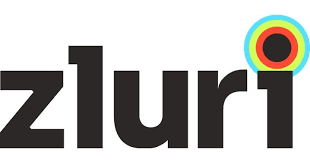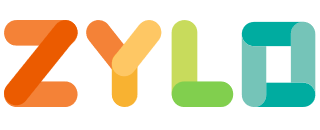The order of things doesn’t always hold. Using the following criteria, we could reduce the field to only five options and provide them here so that you may make an educated choice. The five tools discussed in the article are on various review sites. You may check out user reviews and ratings; we looked into these resources and, as expected, discovered certain drawbacks.
User experience (UX): Your team’s most minor tech-savvy workers should be able to quickly and easily use your SaaS management system. The software’s user interface (UI) allows users to interact with the program. A good UI will have appealing aesthetics, an exciting layout, and a quick response time. This product is going to be used daily. Thus it has to be attractive.
You may use any listed solutions to manage your SaaS applications, although some come with more comprehensive tools than others. A sophisticated platform must include automated workflows, security regulations, and SaaS expense management. Let’s examine these five options and determine what makes them unique. With Zluri, IT administrators may streamline their staff’s onboarding and offboarding procedures. User provisioning becomes less of a chore.
1. Zluri

- Pricing: $125/month for Essential, $250/month for Standard, and $650/month for Pro.
- UX: 5/5
- UI: 5/5
- Ranking on Capterra: 4.9 out of 5
- In addition, comprehensive reports may be generated on demand to show which users have access to which services and when those users’ permissions will expire, simplifying the process of staying compliant. It provides the administrator with additional information about which users can access which programs.
- Cost-free demo: After the demo, yes
Pros:
- Provision for automated onboarding, de-boarding, and personalization
- Allows for comprehensive monitoring of cloud-based software
- Effective communication with clients
- Quickly set up
- Consumer Opinions
Analysis:
Zluri has a 100% success rate in predicting and recommending the unique features a new user would want, depending on their job function and department specifics. Many of the responsibilities of IT asset managers, such as discovering and deploying appropriate software, are lightened as a result.Zluri recommends groups but also channels in each app depending on the user’s job. Zluri can do the same for departing employees by blocking their use of company-wide software.It also creates a copy of the user’s application data that may be restored when access is revoked. Zluri’s warning system notifies IT and asset management of canceled provisions to ensure 100% deprovisioning.
What can you do using Zluri:
If you are in need of user provisioning software Zluri is the right tool for you. Zluri automates repetitive IT operations like provisioning and de-provisioning during employee onboarding, offboarding, and position changes like promotions or internal job postings. As soon as a new employee is added, it understands precisely which channels and groups they should join.
Access may be granted or revoked to apps with only a few mouse clicks, facilitating a seamless onboarding/offboarding procedure.
2. Levity

- Pricing: Depending on the number of AI forecasts and process steps you need, prices might range from $100 per month to above.
- UX: 4.2/5
- UI: 4/5
- No reviews on Capterra.
- It is a machine learning technology that aims to assist organizations in automating routine tasks without needing custom coding. The use case is applicable everywhere that AI can automate repetitive, manual operations.
- Try before you buy: no.
Pros:
- Applications for Group Work
- Model Training in Deep Learning using Drag and Drop
- Multilingual and Multi-Source Data
- Management Templates for Natural Language Processing Tasks
- The Integration of Third Parties
- Process Management in Workflow
Analysis:
With Levity, even non-technical users can create AI-powered process automation without writing code. Users can input their original data to develop bespoke AI models that integrate with their already familiar resources. The models now support PDF classification, text classification, and picture classification. Examples that are often cited include the examination of email content and the prioritizing of customer service tickets – The grouping of survey responses – The filing and routing of documents – The identification of flaws in goods.
What you can do using Levity:
- Finding product flaws. The product team prioritizes new features above customer service demands. By categorizing requests, you can better understand user issues.
- Targeting users through segmentation; You may create niche markets and target specific audiences by analyzing the language they use.
- New feature ideas; If your product included a logo generator, a consumer may tweet, “I’d love it.” This input may improve your product.
- Real-time analysis; Automated text categorization can monitor your brand’s mentions in real-time, allowing you to respond quickly to pertinent messages and ensuring that you never miss an opportunity.
- Error-proofing; Error-prone humans aren’t machines. Machine Learning filters and parameters all data and outputs. Text classification models are unbeatable once taught.
3. Cledara

- Pricing: $125/month for Essential, $250/month for Standard, and $650/month for Pro.
- UX: 5/5
- UI: 4.9/5
- A 4.5 out of 5 on Capterra!
- Its advanced features are virtual debit and credit cards (only for use in the United States), SaaS app administration, SaaS analytics, SaaS buying, financial automation, interfaces with Gmail and Xero, and built-in compliance monitoring and reporting.
- Cost-free demo: After the demo, yes
Pros:
- Compatible with all cloud-based software
- User interface and intuitive control panels
- Automating Workflows
- All-encompassing access to and management of SaaS applications
- Every software purchase earns an unlimited 2% cash back, while most other assets get 1%.
Cons:
- It’s essential to arrange payment terms with each supplier.
Analysis:
Cledara is a SaaS payment and administration tool for startups and scaleups. By consolidating the administration of all of an organization’s SaaS applications under a single roof, Cledara enables businesses to regain command of their software budgets. When you sign up for a Cledara membership, you’ll be given access to a virtual debit or credit card. Teams can find, buy, and manage all of their software in one convenient location while still maintaining application-specific budgets. Cledara reveals all the software being utilized (or not used) across your company. Knowing who is using what app and why may be a time-consuming chore. In Cledara, you can easily monitor and manage your subscriptions. Cledara helps you avoid spending for duplicates and quickly identifies underutilized SaaS, all while providing a large cashback offer of 2% and no foreign exchange costs should you need to purchase SaaS in a currency different than your own. Cledara’s key selling point is that it consolidates all the resources you need to run your SaaS into a single, easy-to-use interface. It helps with use and monitoring, like the other technologies in this article, but also includes SaaS purchases, giving finance and IT total control over software cost. As a bonus, Cledara can help you keep track of your software subscriptions by keeping a running tally of when each one is due to expire and sending you timely reminders and notifications.
What you can do using Cledara:
- One-stop shopping for managing your applications and spending
- You may calculate your return on investment by analyzing your expenditures and consumption.
- It is essential to keep track of your subscriptions and to prevent accidentally signing up for the same.
- Lightweight workflows and process management tools for budgeting and spending oversight.
- Cledara provides all the essential capabilities needed to streamline your SaaS administration process and get up and running fast without the hassle of complicated connections or time-consuming tech deployment. The best part is that it has several helpful features, such as the ability to cancel subscriptions with a single click.
Sign up with Cledara now, and you’ll have a centralized hub from which to see, purchase, and manage your software subscriptions, freeing you to concentrate on what’s important.
4. Zylo

- Software cost is determined on an individual basis and is accessible upon request.
- UX: 4.3/5
- UI: 4.5/5
- A 4.5 out of 5 on Capterra!
- Integrations with security and compliance apps, statistics, and constant monitoring are just a few of the cutting-edge features available.
- Yes, we do offer free trials.
Pros:
- Automatic email subscription renewal reminders
- Maintaining detailed software records, such as license counts and expiration dates, is possible.
Cons:
- Depends on connections
- SaaS activity is only detected on an as-needed basis and not blocked.
- Lacks SaaS integration when making a purchase
- Zylo is an additional option for SaaS management software on our list.
Analysis:
Zylo is making an effort to standardize the SaaS administration procedure. The device is capable of locating applications anywhere inside an organization. The IT and accounting departments would like that since they have trouble keeping track of everyone’s software. Zylo may also be used to improve SaaS expenditure management and spot inefficiencies. It allows businesses to pinpoint which app is eating into their resources without providing tangible benefits.
What you can do using Zylo:
- This SaaS management system guarantees legality using many layers of control. It is encouraging for companies since security is becoming more of a priority.
- Zylo additionally simplifies renewal administration. Access billing information and take care of recurring subscriptions with ease. As for the latter, it might help you save money when purchasing SaaS programs.
- Zylo simplifies the procedure, although it is not without drawbacks.
There are several constraints on integration with the tool. They rely on their partnership with Okta. Zylo won’t have access to the data from those tools if the integration fails or they aren’t available through Okta. User feedback has also indicated that the data in question needs to be manually scrubbed for correctness.
5. BetterCloud

- Pricing: $3/month for the One Plan, $6/month for the Core Plan, and $10/month for the Enterprise Plan
- UX: 4.2/5
- UI: 4/5
- 3.6 out of 5 on Capterra.
- App discovery, automated processes, and security compliance are all cutting-edge functionality.
- Try before you buy: no.
Pros:
- Preventing the Loss of Data
- Improves both the hiring and firing procedures
Cons:
- Some familiarity with the UI is necessary.
- Depends on connections
- SaaS activity is only detected on an as-needed basis and not blocked.
- Lacks SaaS integration when making a purchase
Analysis:
BetterCloud is a platform for managing SaaS that wants to help businesses eliminate SaaS sprawl. It provides a consolidated overview of all of your SaaS applications, much like other management solutions for this kind of software. BetterCloud streamlines the onboarding process for new employees. Automate onboarding processes so all new workers can access the devices, applications, and data required to accomplish their duties more effectively.
What you can do using BetterCloud:
- BetterCloud additionally includes security compliance as a crucial component.
- The instrument gives you command over your applications, users, and data for compliance purposes.
- If you find inconsistencies, you may correct them so your business remains compliant.
- Using BetterCloud also makes your files safer. When files are shared with unauthorized parties, the user is notified so that they may select what to do next.
BetterCloud has certain drawbacks, yet it still made our list. When it comes to data export, the app has its limits. Users have reported that processes are sluggish and time-consuming to set up correctly and that exploring and identifying them might be challenging.
Which SaaS management product do you recommend the most highly for your company?
Of course, the answer is conditional on your business’s specifics. It’s essential to consider your long-term objectives when deciding which management platform to choose. As you can see, determining your needs and carefully evaluating potential suppliers’ offerings is essential when selecting the best solution. The growth of SaaS apps necessitates that your organization and teams, particularly IT and financial groups, examine the control and visibility required to maintain your software assets structured and generate ROI.
Activate Social Media:


